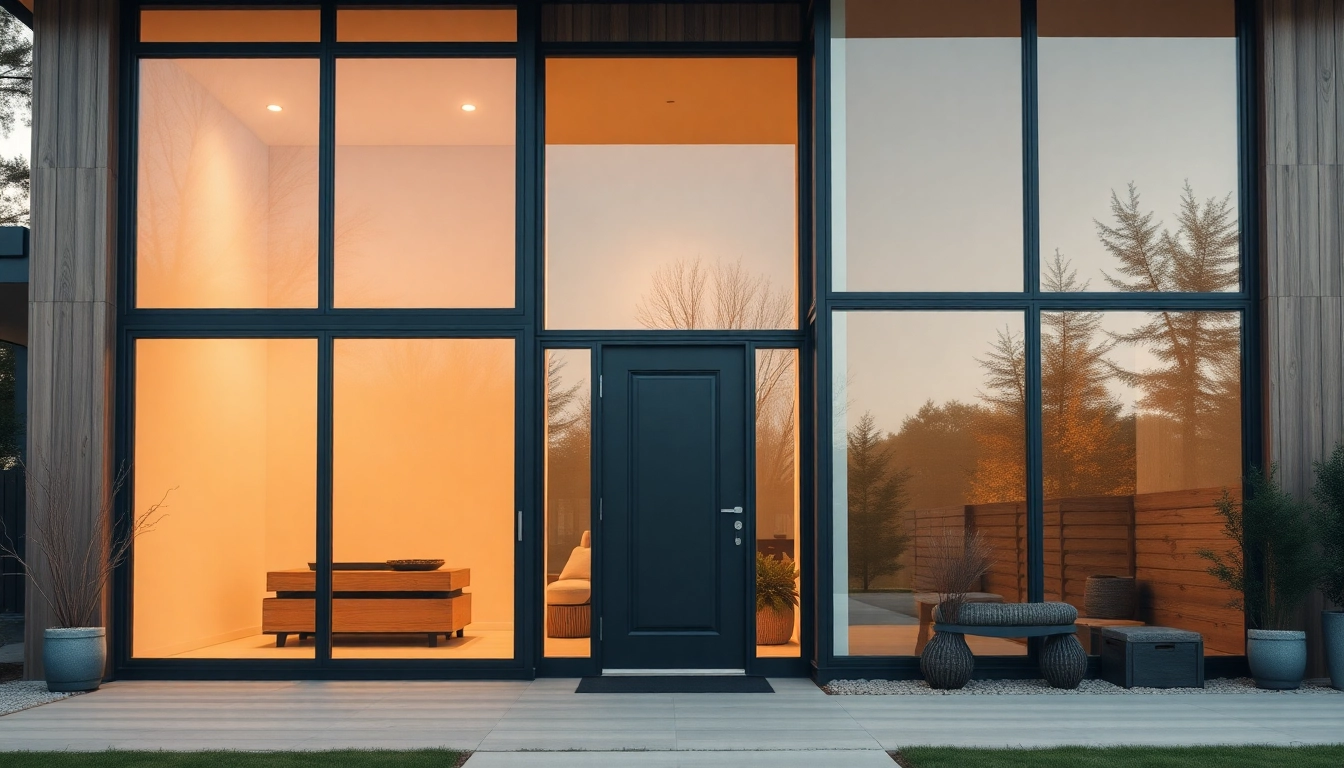Choosing the right windows and doors shapes more than curb appeal—it influences comfort, energy use, security, and long-term property value. A window and door company guides homeowners through every stage, from material selection and glass performance to installation practices and warranties, ensuring outcomes align with climate, architecture, and budget.
From initial planning to final installation, partnering with a trusted window and door company ensures you meet energy, security, and style goals.
How a Window and Door Company Shapes Home Comfort
Assessing Energy Efficiency with a Window and Door Company
Energy efficiency hinges on more than the glass itself. A thoughtful assessment considers U-factor, solar heat gain coefficient (SHGC), and air leakage, guiding selections toward products that minimize heat transfer while maximizing natural daylight. NFRC labeling and ENERGY STAR-rated options help homeowners compare performance across profiles and sizes. Importantly, installation quality—sealing, flashing, and air barrier integrity—affects actual performance as much as the product spec.
Material Choices: Window and Door Company Options
Frame materials influence durability, maintenance, and insulation. Vinyl offers strong energy performance with low upkeep, fiberglass blends resilience with a slim profile, wood provides natural beauty but requires dedicated maintenance, and aluminum can be paired with insulating cores for lighter weight and modern aesthetics. The best choice depends on climate, environmental exposure, and the desired balance between cost, longevity, and style. Glass choices—double or triple glazing, low-emissivity coatings, inert gas fills—further tailor comfort and annual energy savings.
Choosing Windows and Doors: What a Window and Door Company Delivers
Windows and Doors Core Offerings Managed by a Window and Door Company
Most providers cover a broad portfolio: operable and fixed windows in various styles (casement, double-hung, sliding, awning, picture), as well as exterior doors, sliding and hinged patio doors, and entry systems. The scope often includes replacement projects and new construction, with guidance on code compatibility, flashing details, and proper substrate preparation to ensure performance and durability.
Customization vs Standard Models in a Window and Door Company Project
Standard models offer reliable performance and shorter lead times, but many projects benefit from customization—custom sizes, color finishes, and specialty hardware. Template-driven measurements, 3D rendering, and on-site surveys help achieve precise fit and consistent finishes. While customization may extend timelines and budget slightly, it enables seamless integration with unique architectural features and interior trims, enhancing both aesthetics and function.
Matching Styles to Architecture with a Window and Door Company
Architectural harmony matters. Exterior profiles should complement rooflines, cladding, and landscape, while interior treatments align with trim, flooring, and cabinetry. A window and door company brings design intelligence to color palettes, hardware finishes, and glass textures that elevate curb appeal without compromising energy goals. The right partner helps translate a house’s character—whether modern, historic, or transitional—into consistent, durable performance.
Design, Efficiency, and Durability: Real-World Outcomes from a Window and Door Company
Design Trends for Windows and Doors
Current trends favor expansive glass and slim, rigid frames that maximize daylight while maintaining thermal performance. Black or oil-rubbed hardware, integrated blinds between panes, and smart features that automate operability are common. Design-forward choices, when paired with high-performance glazing, deliver bright, inviting spaces that also meet stringent energy codes.
Durability and Weather Resistance
Durability depends on materials, coatings, and installation details. Systems rated for high wind loads, impact resistance in hurricane-prone zones, and robust weatherstripping help prevent air and water intrusion. Regular inspection of seals and gaskets, plus proper drainage and drainage channels, keeps performance strong in varying climates and seasons.
Finishes and Hardware Details
Finishes—from neutral to bold—shield hardware against corrosion and wear. Hardware options include multiple textures and finishes (matte, satin, antique) to match interior fixtures and exterior accents. Glass textures, decorative grills, and energy-efficient coatings offer nuanced personality without sacrificing comfort or maintenance.
The Process: From Consultation to Installation with a Window and Door Company
The Consultation: What to Prepare for a Window and Door Company
Prepare a clear scope: number and types of openings, current frame conditions, and any architectural constraints. Have layouts, rough measurements, and a sense of preferred aesthetics and budget ready. Bring building codes or permit requirements to ensure proposed solutions are compliant from the outset.
Installation Best Practices and Warranties
Effective installation emphasizes proper flashing, sealing, and interior air barriers to prevent moisture intrusion and energy loss. Reputable providers offer combined product and workmanship warranties, often ranging from 5 to 20 years, with specified conditions for service and coverage. A clear documentation trail ensures claims are straightforward if issues arise post-installation.
Post-Install Support and Maintenance
Post-install care includes routine cleaning, gasket inspection, and lubrication of moving parts. Schedule regular checks to verify seals, hardware alignment, and drainage. A strong aftercare program streamlines warranty claims and ensures continued performance through the life of the product.
Measuring Impact: ROI, Resale, and Maintenance with Your Window and Door Company
ROI Impacts: Energy Savings and Curb Appeal
Energy-efficient upgrades reduce heating and cooling loads, delivering tangible utility savings and potential resale value boosts. Beyond dollars, improved curb appeal attracts buyers and can shorten market time, while better comfort and noise attenuation enhance daily living during occupancy.
Maintenance Schedules and Long-Term Costs
Maintenance typically involves annual or biannual checks of seals, tracks, and hardware, plus periodic glass cleaning and gasket replacement as needed. Life expectancy varies by material and climate—windows may last 15–40 years, doors 20–40—with proactive maintenance extending service life and stabilizing long-term costs.
Choosing a Trusted Window and Door Company for Longevity
Due diligence matters: verify certifications, review installation credentials, and request local references. A company with a robust dealer or service network, transparent warranty terms, and documented case studies provides greater confidence in longevity and support through the life of your project.
